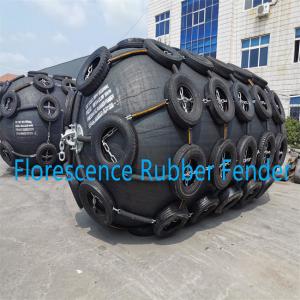

Add to Cart
Yokohama Pneumatic Rubber Fender
Overview:
Yokohama pneumatic rubber fenders have been in use for around 50
years. It is the leading anti-collision device for marine
application in the world. This compressed air filled rubber fender
is used as a protective medium for ship to ship contact (STS),ship
to quay (STQ) and ship-to-berthing (STB).
Yokohama pneumatic rubber fenders can be delivered in various sizes
and types. Chain and tyre net (CTN) type is usually
recommended to protect the fender body, but sling type or body only
is also available.
The pneumatic fender is also known as the Yokohama fender. Tankers’ Ship-to-ship (STS) operations mostly uses this type of self-floating, long useful life fender. Industry-wide known as pneumatic fenders, but why are they also called Yokohama fenders?
Yokohama was the first company to design such fenders. Hence the name. The traditional method is to find and use dead whales as large fenders for bigger ships. After the World-War II, many turned to find a better, more constant man-made equipment since the usage of dead whales has many downsides to it. Rubber was thought to be a excellent material.
Structure:
1.Outer Rubber
Cover outside on the ball of rubber layer, which is used to protect
skeleton material and inner rubber ball from damage of
external force.
2.Cord layers
Reinforced cord rubber layer is composed of winding synthetic cord
layer, it is mainly used for maintain the internal air
pressure.
3. Inner Rubber
On the ball inside the rubber layer, which is used to prevent air
leakage and control the ball pressure.
4. End Flange
The metal parts at both ends of fender, which can be fitted with
charging valve and safety valve.
Features:
1. High energy absorption with a low reaction force
2. Light weight, portable and floatable, can be installed and
replaced easily
3. Heavy duty and long service life-over 10 years
4. Supplied as sling type (body only) or with chain and tire net
for protection of the fender body
5. Suitable for locations with large and small tidal differences
Application:
1. Offshore platform
2. Oil and gas tankers
3. Fast ferries and aluminium vessels
4. Temporary and permanent installations
5. Rapid response and emergencies
6. In ports with extreme tidal variations
7. Fishing vessel, transport ship and ocean trawler
